
Comments are available here.
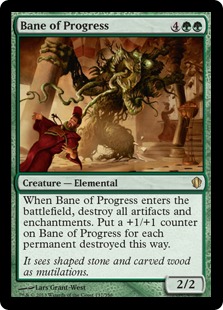
Commander
I’ll start that there isn’t anything particularly wrong with the new 2013 Commander set. After the deck lists were released, I scanned the individual cards anxiously. I liked them, but I couldn’t put my finger on it. There was something missing. I had to ask if I was being overly critical. I tend to do that. I tried letting it go. I just couldn’t. Eventually, it dawned at me that Wizards had missed an opportunity to design a card specifically for the multiplayer fanatic. The whiff was planeswalkers.
The trouble with most planewalkers in the Commander format is that they are, for the most part, designed for the Standard constructed format. People do play with planewalkers in the format to some success. A few of them are robust or powerful enough to be played. In order to play them, though, planeswalkers need a lot of support. A person just can’t slap down a planeswalker on an active board. They get gobbled up quickly by an onslaught of creatures from every direction. To make them work, lots of wrath or prison effects are needed. When planewalkers do work, it is often in a win more situation.
With the new Commander sets, Wizards finally has a successful product that targets the multiplayer/casual crowd. With that said, it is also an opportunity to print planewalkers specifically designed with the Commander crowd in mind. I look at Nicol Bolas, Planeswalker for inspiration. Its high mana cost is prohibitive for most constructed play, but sees a decent amount of casual play. The Elder Dragon or a new planeswalker of the same shard could have easily fit into the Commander decks. In essence, there would have been a cycle of five planewalkers for each shard.
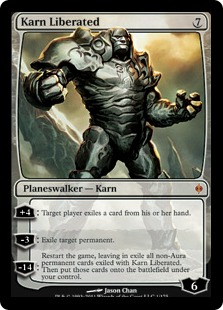

From a design standpoint, there is a lot of untapped design space to be utilized for the casual planewalkers. A set of planewalkers would help connect the products by being a cycle. Players love planewalkers and cycles. Not that Commander product needs any help, but it would be something to excite the casual crowd. For 2014, I therefore hope to see some big, bad planewalkers in my Commander product.
Fat Packs
The fat packs are stated as targeting the beginner and collector. This may have been true once. As time has passed, the fat pack has continuously been morphed from its original purpose. The original allure was the inclusion of the book for that expansion, which have since been removed from the mixed reviews and the cost of their inclusion. As a result, there is little incentive to buy the fat pack. Lands, dice, and a spindown counter are not particularly exciting. Time has changed, and we now have other products to purchase that now fulfil the same role as the fat pack. Don’t get me wrong, I used to love the fat pack. All I'm saying is, times have changed, and so should the Fat Pack.
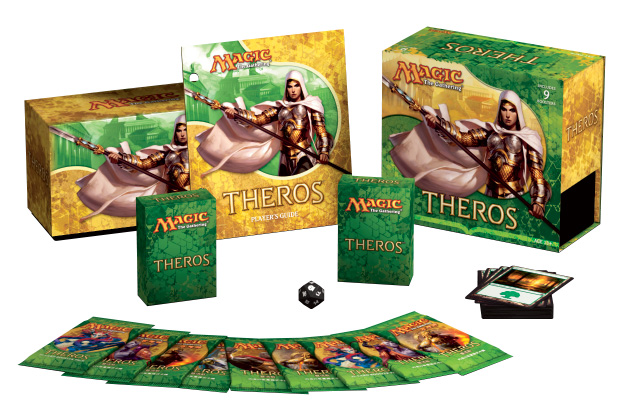
My wish is for a better product that still fulfils its original intentions of appealing to collectors and beginners. Before that happens, we have to put the actual name on the chopping block. The name fat pack has no value from a marketing standpoint. It doesn’t inform the consumer of what the product entails, the words themselves lack any enticing value, and it resonates a slightly negative tone. The only thing we are clinging onto is history. The product would benefit from a name change. For example, calling the product the "Planeswalker Pack" is much more exotic and enticing than "Fat Pack". To foreshadow, the Planeswalker Spellbook is a much better name.
The player’s guide is in the pack for the beginners. However, I question its value with the amount of information out there today on the Internet. The problem with the guide is it has diminishing returns. It is like any kind of movie. The most exciting time to see a movie is the first. Very few movies grow in nostalgic value as time goes on. It is the same for the guide. Back in the days that I got fat packs, the guide would stay out for a week until it found a permanent home somewhere collecting dust. Since I am a practical guy, I searched for a way to merge the benefits of the card encyclopedia with practicality.
What I eventually stumbled upon was a binder or what I will eventually call the spellbook. Instead of getting a box, the consumer gets a binder. In this Theros binder, it would have fifteen double-sided pocket pages. The math equates to 270 pockets. This enables a spot for the 249 cards in the set plus a few extra places for token cards and whatever. The double-sided pocket pages themselves would have a pocket in between the pages. Here is where the opportunity exists to slide in a double-sided card page. This card page would have prints for nine cards on the front and nine on the back. Slide the card page into the page pocket and we have earmarked each slot with a specific card. I suppose the back of these pages could have the artwork printed right onto the back and then seal the pages together. However, I am sure this is a much more expensive proposition. Anyway, the final product is an actual spellbook.
Why is this better? For one, we instantly have a place for beginners and collectors to put their new cards into and start collecting. This encyclopedia won’t get tossed in a corner to collect dust. The encyclopedia goes with the player to FNM, home, or to the comic bookstore. Where the spellbook goes; so does the encyclopedia. A successful product incorporates itself into the customers’ lives. This very idea is what made the IPod so successful in that it became inseparable from our daily lives. We stick in a rules sheet and a guide into the binder to wrap everything with a pretty bow.

The worst thing about the fat pack is the missing novel. It will likely never to return. The premise of the novel was for flavor, education, and appeasing appetites for players of Vorthos heritage. There is the opportunity to replace this aspect with a small comic. The comics on dailymtg.com have seen a fair amount of success as people appear to enjoy them. It would not be difficult to construct a small comic to introduce the collector or beginner to the new set. Comics are cheap and Wizards has the talent at their disposal to make it happen. The comic itself could easily be tucked into the inside jacket of the spellbook.
Since we are changing everything, let’s tweak the boosters. Am I insane? Maybe. There are two things wrong with the boosters. The first problem is that a new player could fail to open a mythic rare. Sure, nine boosters almost guarantees at least one mythic. I don’t want almost. I want an absolute. The second problem is they are just boosters. Why as a collector would I care about boring old boosters? I can just go buy boosters. To add some spice to the product, let’s switch to a premium pack and three boosters. We have seen a premium pack before, but it entailed foils and cards from the Alara block. In these premium packs, we would get one mythic, three rares, nine uncommons, one foil land and a token card. A premium pack guarantees a mythic for the new player and helps drive home the rarities of the cards. A premium pack is also something to entice the collector to keep in its original packaging or rip.
Last but not least, Magic the Gathering stickers. Why? Because they are fun. Who doesn’t love stickers? The collector may keep them in mint condition while the beginner slaps them all over the place. Maybe they place them on the binder, the wall of their room, or on their forehead. That is what makes stickers so much fun. Besides candy, kids like nothing more than stickers.
The last suggestion I have is to have the planeswalker symbol to be displayed prominently on the front of the spellbook. It is a planeswalker’s spellbook after all. To me, it is a good use of the symbol that gets used too little in my opinion. Let’s bring it front and center to give the spellbook some legitimacy.
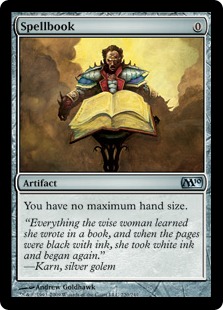
- One spellbook (binder) with Theros artwork.
- Fifteen double-sided card pages
- Fifteen card display inserts.
- One premium pack.
- Three booster packs.
- One Theros comic.
- One sheet of Theros stickers.
- Basic land pack with unique artwork.
- One spin-down life counter.
- One player’s guide page.
- One mechanic FAQ page.
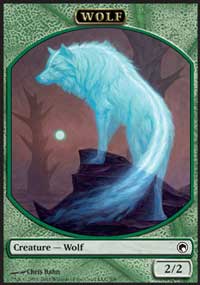
Once upon a time, the winner of Worlds got the opportunity to have a Magic card made in their likeness and to have an influence in its design. I understand why this went to the wayside. However, I think we can still honor those players by having a token card made in their likeness or on the card. There is no design headaches accompanying a token card. It would be an easy way for Wizards to give these players a reward without that headache. Now, this doesn’t mean we have to have a pro player made into a wizard. They very well could be placed on the card next to, say, a Dragon, or Beast, or riding, fighting, or etc. There are a lot of ways to incorporate them into the artwork to clarify.
On the same note, I would like to see Wizard employees on token cards. I am being purely playful when I suggest this idea. What I envision is token cards in the next Unglued set. It would be fun to see Mark Rosewater in a chicken suit on a token card, Ken Nagle on a big fatty, or Aaron Forsythe in a penguin suit. This would be an opportunity for Wizard employees to show their less serious side. R&D token cards would be purely for fun. The idea may not suitable for a regular set as it would seem narcissistic. However, R&D tokens for an Unglued set might be appreciated by a certain segment of the Magic populace.
The Golden Ticket
This is probably the biggest long shot of any of these suggestions. The idea is simply the Charlie and the Chocolate Factory golden ticket premise. In a future set release, a select number of golden Magic cards are randomly distributed into booster packs. The owner of those tickets would win a chance to tour Wizards of the Coast. That is it. I’m sure a lot of legalese and other complications accompanies such an endeavor. The benefit though would be a great PR stunt and I’m sure it would sell packs. Magic players are dreamers and winning the chance to tour Wizards of the Coast would be a dream come true.
Core Set Flavor
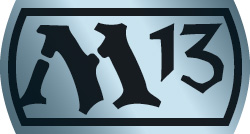
I am not asking for a big story plot or new mechanics. What I want is the core set to feel like something. Anything really. I think the mistake is not giving the core set its own plane. The lack of world building doesn’t help bring everything together. Somehow, we got engrained that every new set or expansion must be wildly different or new. We believe the core set can’t have any world building because of its mediocrity. Why not? Not every plane must be in utter despair or all-out war. It is very plausible to build a stable world. Sure, there can be skirmishes and minor conflicts, but overall the plane itself is pretty constant.
The goal of doing world design would be to create some consistency and give direction to the set. A world creates a target to hit. It gives the art in the set a direction. As the set develops from this world, it provides a consistency that gives the set a more holistic feel. My hope is the next time I draft a core set that I can actually taste the flavor of the set. I don’t want to be drafting a random set of cards with no connection to one another. I just want some flavor.
Magic Online Lending
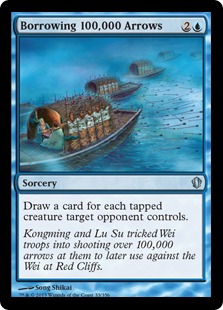
What would make life simpler would be a lending function. It involves the ability to mark a deck or cards as lent cards. After a certain amount of time, those cards would simply reappear into my collection. Say I hook up with my friend Mike on Sunday night to play some Commander. I put a one-day lending term onto the deck. I open up a lend function and give Mike the deck. We play some games and call it a night. Twenty-four hours later on Monday night, those cards are back into my collection. There is no hassle or mess.
The bonus of this added functionality is it promotes lending, or should I say 'renting', on a commercial level. Say I want to join a Legacy tournament online, but I don’t have the Tarmogoyfs I need. I could go to lending bot Rent2000 and rent a set of Tarmogoyfs for three days at the price of five tickets. After three days, Rent2000 gets them back automatically. The same can be done for decks. I can envision a segment of MTGO stores hooking up with Professional players. For the low price of twenty tickets, I can rent a deck built by Professional Magic players. Hey look, I just created online endorsements.
The advantage of the lending/renting functionality is it lowers the barrier to play. It lowers the threshold for newer players, players simply interested in a new format, or play-testing. New players can’t just jump into a format without a huge investment. Renting may help with their acquisition to that format. The same can be said for veteran players who haven’t played much of the Modern or Legacy formats. Renting could also be a way to lower the threshold of testing decks. Lion's Eye Diamond is incredibly expensive online. It is quite the investment to just try something out or test a theory. My hope is that renting would create more innovation.
I don’t pretend to know what the going rates on renting decks would be. I’m sure the market will adjust itself and find its own sweet-spot. What I do believe is that this is a good thing for MTGO. I don’t think it will destroy Magic as we know it. Renting is a known in the real and online world. It is a dynamic that I think MTGO could utilize to its benefit.
Here’s to wishful thinking,
Meyou
-
View User Profile
-
Send Message
Posted Jan 27, 2014Possibly the best MTG article I have ever read. All of these need to come true.